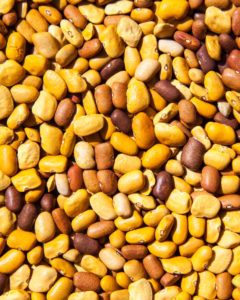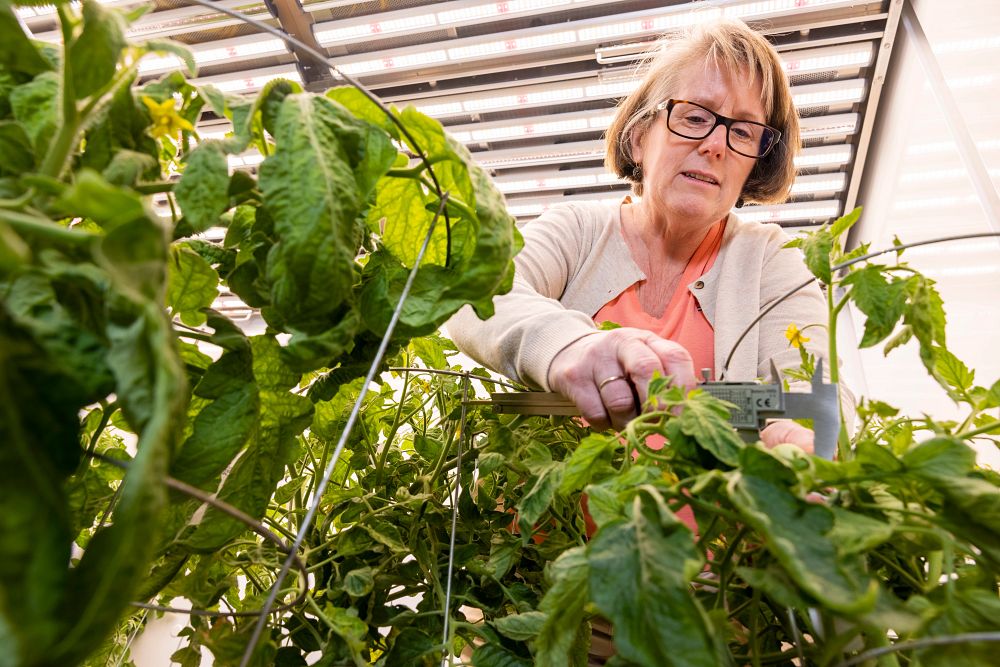UGA genomicist seeks to offset climate impacts on important food crop
The common bean — which includes many varieties of dry beans, from navy and black beans to red, pinto and green beans — are an important nutritional source for many world populations. However, rapidly changing climate conditions are making them increasingly difficult to grow in many locations due to high temperatures and susceptibility to diseases and pests.

At the University of Georgia, researchers have received more than $799,000 in funding from the U.S. Department of Agriculture’s National Institute for Food and Agriculture (USDA-NIFA) to address increasing difficulties in growing common bean by cross breeding with tepary bean, a species native to the Sonoran Desert in the southwestern United States and northern Mexico that has been cultivated by indigenous cultures for thousands of years.
While tepary bean has favorable traits — such as high heat and drought tolerance — it is not well-suited to widespread modern cultivation practices and produces smaller beans and smaller yields than common bean species.
Using information from the genomes of both common bean and tepary bean, Robin Buell, GRA Eminent Scholar Chair in Crop Genomics in the Department of Crop and Soil Sciences at UGA’s College of Agricultural and Environmental Sciences, is embarking on a three-year study designed to build a genetic knowledge base to rapidly identify causal traits in the genomes of both common and tepary bean with the ultimate goal of developing varieties better adapted to the planet’s changing climate.
While common bean can be grown in many parts of the world, the crop is dependent on water and does not grow well in environments with higher nighttime temperatures. Adapting common bean with the heat- and drought-tolerance of tepary bean, or imbuing the positive agronomic traits of common bean into tepary bean, could help prevent climate-based yield loss and lead to increased agricultural production of bean varieties in marginal agricultural areas.
“We have the blueprint for both of these species, and this project is focused on trying to take the nice agronomic traits of common bean and move those into tepary bean, then we have the disease resistance from tepary bean that we want to move to common bean,” Buell said. “We have the code now and we can line everything up. The plan now is to take something that Mother Nature has already made very well-adapted to climate, but may not be the best culinary bean, and take those good traits into common bean.”

While plant breeding has always involved crossbreeding for desirable traits, this study will use genome sequences to rapidly identify the loci of the genetic traits they want to share between the species, speeding up the process exponentially.
“Their genetic code is so similar to each other, our first aim is to sit down and collate what we already know about common bean and what we already know about tepary bean and stitch it together at these common reference points. We’re going to use computational and genomic approaches to get the precision markers that breeders can use to make the cross and do the selection without having to grow a substantial number of additional generations,” Buell said.
Through this technology, the researchers hope to be able to identify the DNA markers responsible for desired traits rather than depending on the phenotyping of plants used in traditional plant breeding.
“Traditionally, you would make the cross then you would pick which individual traits you want from the family of progeny that comes out. Using the DNA markers for those traits, we can do that in an afternoon rather than a full growing cycle. We can increase the cycle and the workload by doing this with DNA markers instead of planting them in the field and seeing what you come up with,” Buell said. “We’ve already got all the markers for the different traits that we want, so we can do this precision breeding.”
Once the researchers at UGA have selected the desired traits from each species, the crosses will be made by research geneticist Tim Porch at the U.S. Department of Agriculture’s Tropical Crops and Germplasm Research Center in Mayaguez, Puerto Rico. A third partner, Consuelo de Jensen, director of the Plant Diagnostic Clinic at the University of Puerto Rico, will test the new lines for resistance to powdery mildew, one of the most commonly occurring fungal diseases on many types of beans. The partnership with the University of Puerto Rico will also engage master’s degree students in plant disease diagnosis.
“Mother Nature has already selected for related-species variance of some of our major crops that are already grown in all these different climates. These things are found throughout the world and they’re very adaptable,” Buell said. “Their genetics allow them to intermingle … we’re just taking advantage of technology to boost what Mother Nature already did for us.”

